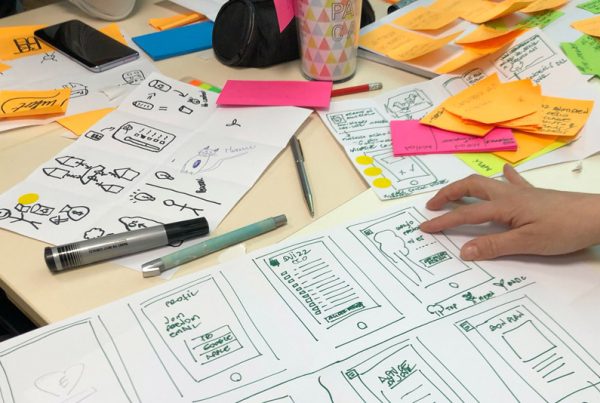Since the internet has become an integral part of our lives, it is important to consider the environmental impact of our online activities, including web design.
While we often focus on reducing our carbon footprint in the physical world, the digital realm also has a significant ecological footprint. One aspect of digital sustainability that is gaining attention is sustainable web design. By implementing eco-friendly practices in web development, we can shape a greener digital future. Let’s explore some key principles and practices that can help create sustainable websites.
Related Articles:
What is sustainable web design?
The internet is made up of digital stuff, but it actually has a real impact on the environment. Everything we do online, from pictures and colours to programming languages and servers, requires electricity and produces carbon emissions. As the internet continues to expand, its environmental impact also increases. However, there is a silver lining: by making small, considerate changes in how we design and develop websites, we can lessen the harm to the environment. Not only that, but these changes can also make the internet stronger and better able to adapt to the challenges posed by climate change.
A sustainable web design reduces energy consumption, minimises carbon emissions and optimises resource usage. It considers the entire life cycle of a website, from design and development to hosting and maintenance. Based on the Website Carbon Calculator, an average web page generates about 0.5 grams of CO2 each time it is viewed. A website with 10,000 page views per month adds up to 60 kilograms of CO2 emissions per year.

Practices of sustainable web design
Here are several practices to follow to minimise the environmental impact of your website and make it more sustainable.
Efficient code
Optimising the code is crucial for reducing the energy consumption of a website. Bloated code with unnecessary elements and excessive scripts can slow down a site and increase its energy requirements. By writing clean, easy-to-understand, easy-to-change, efficient code and minimising file sizes, developers can create websites that load quickly and consume less energy.
Minimalistic design
Embracing minimalistic web design principles enhances the user experience and contributes to sustainability. Simple and intuitive layouts with fewer elements require fewer server resources and bandwidth to load. Minimalistic designs are not only visually appealing but also help reduce the carbon footprint of a website.
Smart font selection
Using custom font files can make web pages much larger in size. A regular custom font file can be over 200kb and it might only contain one style or weight. When you have multiple typefaces or different font weights, the file size can quickly grow, leading to higher energy consumption and slower performance. To avoid these issues, it’s best to use custom fonts sparingly and consider using system fonts that are already available on the user’s device. This way, you can reduce the file size of your web pages and enhance the overall performance.
Responsiveness
With the rise of mobile devices, it is essential to design websites that are responsive and adapt seamlessly to different screen sizes. Evaluating your website’s performance across different screen sizes, browsers, devices and internet speeds can be a time-consuming task, but it plays a crucial role in sustainable web design. Incorrect content and design display can lead to a negative user experience (UX) and confusion. When users struggle to find what they are looking for, they spend more time navigating the website, which increases energy consumption. To prevent this, ensure that your design adjusts effectively to various variables, accommodating as many different scenarios as possible.

Image optimisation
Images often contribute to the majority of a website’s file size. It’s important to remember that all the pictures on your website should be resized appropriately. This is common knowledge when it comes to optimising website speed and improving SEO. By optimising these images, they can be displayed without any loss in quality, making them load faster. By optimising images through compression and using appropriate file formats, developers can significantly reduce a website’s load time and bandwidth usage.
Efficient hosting
Green web hosting providers utilise renewable energy sources like wind, sunlight (solar) or water (hydropower) to generate the power needed for their data centres. This ensures that the energy used to host your website comes from clean and sustainable sources, resulting in a smaller impact on the environment and reducing your carbon footprint. Selecting a provider that provides eco-friendly hosting fueled by renewable energy is essential in sustainable web design. Look for hosting companies that use renewable energy sources, have energy-efficient infrastructure and employ efficient cooling systems.
Sustainable development frameworks
Utilising sustainable development frameworks and content management systems can streamline the web development process. If you use CMS like WordPress, Magento, Craft, Laravel and others, it is common to find yourself overwhelmed by the numerous options available in the plugin market. Sometimes, we become overly excited about the possibilities these plugins offer and end up cluttering our websites with unnecessary additions. It is essential to evaluate your current plugin inventory, determine what is truly necessary and beneficial for your website and then confidently remove anything else that does not serve a purpose.
Energy-efficient technologies
Explore emerging technologies that promote energy efficiency and sustainability. For instance, using Progressive Web Apps (PWAs) instead of native mobile applications can reduce energy consumption and storage requirements. Implementing serverless architectures and microservices can optimise resource usage and scalability.
Sustainable content
The content displayed on a website also plays a role in sustainability. Encourage the creation of eco-friendly content by promoting environmentally conscious practices and featuring sustainability initiatives. By raising awareness through digital platforms, websites can inspire positive change and motivate users to adopt sustainable behaviours.

Regular maintenance and updates
Ongoing website maintenance is important for sustainability. Regularly updating software, plugins and frameworks ensures optimal performance and security while keeping energy consumption in check. Moreover, addressing broken links, removing outdated content and optimising databases can improve user experience and reduce unnecessary resource usage.
User education
Educating website visitors about sustainability and promoting eco-friendly practices can have a lasting impact. Provide information, tips and resources to inspire users to adopt greener lifestyles. Integrate social sharing buttons to encourage the spread of sustainability messages across various digital platforms.
As businesses and individuals become more conscious of their environmental impact, sustainable web design is gaining momentum. By adopting eco-friendly practices in web development, we can significantly reduce the digital carbon footprint and shape a greener digital future. Each small step towards sustainability in web design contributes to a collective effort to mitigate the environmental impact of the digital realm. Let us embrace sustainable web practices and work towards a more eco-friendly and sustainable online world.
What are your thoughts on sustainable web design to forge a greener digital future. Are you using the right website images? View our article on the best image tips and tricks and join the movement towards a more sustainable online presence.
If you’re looking to elevate your designs or need assistance with web design projects, feel free to contact us. We will be glad to assist you.


